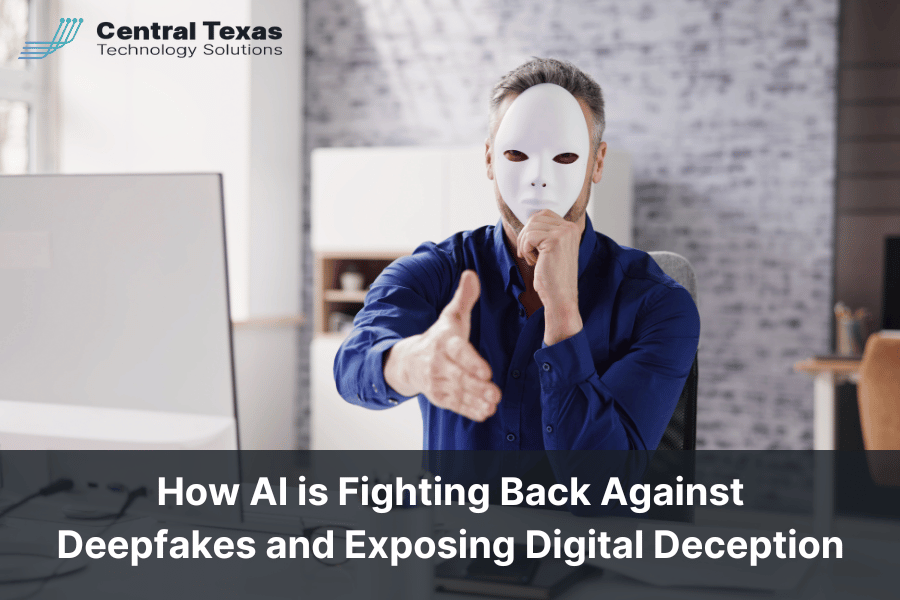
Could AI Deepfakes Ruin Your Business Overnight?
As a business owner, your reputation is everything. Your brand’s credibility drives customer loyalty, attracts high-value partnerships, and fuels long-term success. But what if artificial intelligence (AI) could threaten everything you’ve built in just a matter of seconds?
Deepfake technology is advancing at an alarming rate, making it easier than ever to manipulate videos, images, and audio. Without AI deepfake detection, your business could be vulnerable to fraud, misinformation, and reputational damage. Understanding how deepfakes work—and how to fight back—is crucial for protecting your brand in today’s digital landscape.
Who Uses Deepfake Technology and Why Should You Worry?
Deepfakes aren’t just a tool for pranksters or social media creators; they’re increasingly being weaponized in ways that can harm businesses and individuals. Here’s who might use them against you:
1. Competitors Looking for an Edge
- Could a rival company create a deepfake video of you or your employees making controversial statements?
- How might the fallout affect your customer base and business credibility?
- Could partners distance themselves from your brand after a deepfake scandal?
2. Hackers and Cybercriminals
- Cybercriminals can use deepfakes to impersonate company executives, tricking employees into revealing sensitive information.
- Fake audio clips can be used to authorize fraudulent transactions, leading to financial loss.
- Deepfake phishing scams can manipulate employees into clicking malicious links or sharing confidential data.
3. Misinformation Campaigns
- False information spreads rapidly, especially when AI-generated content looks and sounds real.
- Fake endorsements, doctored news reports, and manipulated customer testimonials can distort public perception of your brand.
The risks are real, but the good news is that AI deepfake detection tools are evolving to combat this growing threat.
How AI Deepfake Detection Works
The first step in fighting deepfakes is understanding how they’re created. Deepfake technology uses deep learning algorithms to mimic real voices, facial expressions, and body movements. These AI-driven models generate highly convincing fake content that’s nearly indistinguishable from reality.
Common Deepfake Tactics That Could Impact Your Business
Deepfakes have been used to:
✅ Impersonate doctors and professionals to spread false information
✅ Fabricate medical records and legal documents
✅ Trick government agencies and corporate entities
✅ Create fake evidence in legal disputes
✅ Generate misleading news reports and media content
Without AI deepfake detection, businesses are left vulnerable to exploitation, fraud, and reputational attacks.
How Businesses Can Fight Back Against Deepfakes
Fortunately, cybersecurity firms are developing powerful tools to detect and prevent AI-generated deception. Companies like CloudSEK have launched AI deepfake detection technology that uses digital forensics to identify manipulated content.
Key Indicators of a Deepfake
AI detection tools analyze specific features to determine if a video, image, or audio clip has been altered:
🔍 Facial inconsistencies – Unnatural skin textures, overly smooth features, or unrealistic lip movements
👀 Blinking irregularities – AI struggles to replicate natural eye movement patterns
📸 Blurriness or distortion – Subtle artifacts and misaligned features can reveal manipulations
🎭 Skin tone mismatches – AI-generated faces may show slight color variations, especially in lighting changes
How AI Deepfake Detection Scores Work
AI-powered detection tools analyze content and assign a fakeness score based on the likelihood of manipulation:
- Above 70%: Highly likely to be AI-generated deepfake content
- Below 40%: Most likely authentic, human-generated content
Bofin Babu, co-founder of CloudSEK, emphasizes that AI deepfake detection tools are an essential defense against cyber threats. While the technology is still evolving, adopting these tools now can help safeguard your business from potential digital deception.
The Future of AI Deepfake Detection
As deepfake technology improves, so must the tools that detect it. Businesses that stay ahead of AI-generated threats will be better positioned to protect their reputation, secure their data, and maintain customer trust. Investing in AI-powered detection tools now is a proactive step toward ensuring your brand remains credible in an era of increasing digital manipulation.
FAQ: Protecting Your Business from AI Deepfakes
1. How can I tell if a deepfake video is fake?
Look for unnatural facial expressions, inconsistent eye blinking, mismatched skin tones, and subtle distortions. AI deepfake detection tools can also analyze content for manipulation indicators.
2. What should I do if my business is targeted by a deepfake scam?
Report the deepfake immediately, gather evidence, and alert your cybersecurity team. Consider issuing a public statement clarifying the misinformation and use AI detection tools to validate the authenticity of content linked to your business.
3. Can AI deepfake detection tools prevent cyber fraud?
Yes, AI-powered tools help identify fraudulent videos, voice clips, and images, reducing the risk of phishing scams, identity theft, and financial fraud in business environments.
Contact CTTS today for IT support and managed services in Austin, TX. Let us handle your IT so you can focus on growing your business. Visit CTTSonline.com or call us at (512) 388-5559 to get started!
